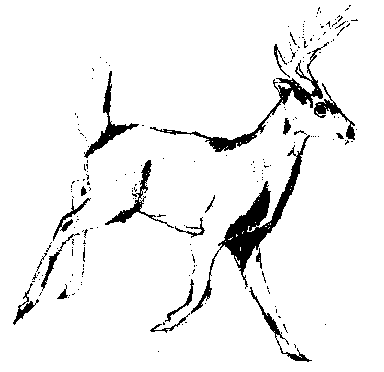

Deer live in woods and fields. They eat acorns, clover, alfalfa, tree buds, apples, berries and mushrooms. You can also attract them with deer feed from stores and salt licks.
Deer have a reddish brown fur coat in the summer and a darker grey one in the winter, They have antlers (males) and hooves. The antlers have a velvet on them. Antlers are shed in January and February and they regrow them through summer.
The buck (male) weighs up to about 400 lbs and the doe (female) weighs up to about 250 lbs. The adults can jump over a ten foot height. They breed between October and December during the rut. The young does are in heat for about 24 hours. If they don't breed, they will be in heat again a month later. Fawns are born in May or June. They are born with a chestnut-colored coat with lots of white spots for camouflage.
The gun hunting season for the whitetail deer is from November 15-30. But to hunt you need a license. You can get multiple permits and licenses such as the anterless deer license and a crop damage permit. Michigan is number one in the nation for archery deer harvesting. And often times it is third [usually behind Texas and Pennsylvania and sometimes
Wisconsin] for firearm deer harvest. We are number one in total number of days of deer hunting recreation.
The money from your deer license is used by the DNR to support wildlife management and research programs, conservation law enforcement, and land acquisition. One dollar and 50 cents of each deer license is earmarked for the Deer Range Improvement Program. Since 1972, the money have funded more then 1,000,000 acres of habitat improvement work.